All About Xylitol and the Danger it Poses to Your Pet
All About Xylitol and the Danger it Poses to Your Pet
The emergency and critical care doctors at OVRS would like to remind pet owners how dangerous Xylitol, an artificial sweetener is for dogs and cats.  The emergency and critical care doctors have reported an increased number of pets being treated for eating xylitol, used as a sugar substitute in foods, including sugar-free gum, sugar-free mints, chewable vitamins, tooth paste and oral-care products. Xylitol is also available in a granulated form at your local grocery store for baking and beverage sweeteners.
The emergency and critical care doctors have reported an increased number of pets being treated for eating xylitol, used as a sugar substitute in foods, including sugar-free gum, sugar-free mints, chewable vitamins, tooth paste and oral-care products. Xylitol is also available in a granulated form at your local grocery store for baking and beverage sweeteners.
Question: Why is xylitol so dangerous for dogs and cats?
Answer: Ingestion of xylitol primarily affects insulin release throughout the body. Insulin causes an increase of glucose (blood sugar) uptake into the liver, muscle, and fat cells resulting in decreasing blood glucose levels.
Xylitol strongly promotes the release of insulin from the pancreas into circulation leading to a rapid decrease of blood glucose levels. Hypoglycemia (low blood sugar) can occur within 30 to 60 minutes of xylitol ingestion with levels as low as 0.1g xylitol /kg body weight.
Hypoglycemia may compound further into liver toxicity, liver damage, and ultimately liver failure. Ingesting amounts of xylitol greater than 0.5 g xylitol /kg body weight increases the risk for developing liver toxicity.
Sugar-free chewing gum is the most common cause of dogs that present to the emergency room. However, the recent introduction of xylitol as a substitute for sugar in grocery stores has increased the potential for toxicity.
Xylitol is perfectly safe for people, but because of different metabolisms, it can be fatal for dogs and cats. A simple piece of cupcake or cookie could kill an animal if the danger is unknown and not addressed immediately.
Question: What are the signs my dog might have eaten xylitol?
Answer: Immediately after ingestion, vomiting may occur. Hypoglycemia (low blood sugar) develops within 30 to 60 minutes, resulting in lethargy and weakness. These signs may quickly develop into ataxia (trouble walking), collapse, and seizures. Prolonged blood clotting times as well as skin and intestinal hemorrhaging are clinical signs associated with liver toxicity that may develop within hours and warrant a very poor prognosis.
Question: What do I do if I think my dog has eaten xylitol? What is the treatment and prognosis?
Answer: If xylitol ingestion occurs, consult your veterinarian immediately. Inducing vomiting to remove the xylitol is imperative, but close monitoring of blood sugar levels and intravenous infusions of glucose (sugar) may also be needed depending on the amount ingested and how quickly the problem was recognized.
The prognosis for dogs with hypoglycemia is good with immediate and proper treatment, while the prognosis for dogs that have developed liver toxicity is poor. Large ingestions of xylitol (a relatively small amount of the product) that are not caught immediately can result in fulminant liver failure and death despite aggressive supportive care. This can occur in less than 36 hours in dogs that are otherwise young and healthy.
If your dog or cat is exhibiting any of the signs listed above of having eaten xylitol, please contact your regular vet or OVRS immediately.
Cataract Awareness Month
It’s August, and that means that it is cataract awareness month! 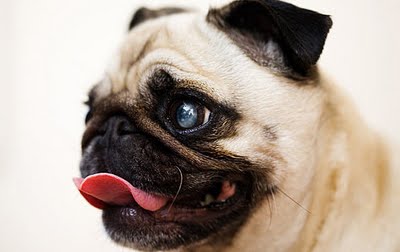 Educate yourself on this common pet problem by reading our FAQs:
Educate yourself on this common pet problem by reading our FAQs:
What is a cataract?
The eye contains a clear lens that helps the eye to focus. Any opacity that develops in the lens is a cataract. Very small cataracts may not cause a problem at all, but larger, cloudier opacities can cause blurry or even totally obscured vision.
If my pet’s eyes are cloudy, does that mean it has cataracts?
Most pets will start to have some hardening of the lens as they age. This results in a grayish-blue haziness to the eye. This is NOT a cataract and does not usually interfere with vision.
Why did my dog/cat develop cataracts?
Most cataracts are inherited and can occur at any age and develop at any speed in one or both eyes. Diabetes or other ocular diseases can also cause cataracts to develop.
What can be done about cataracts?
There is nothing that can be done to reverse a cataract once it has developed. For certain patients, a veterinary ophthalmologist can perform a surgery in which the lens is removed. This is a delicate and involved procedure, however it can restore vision almost completely.
What if I don’t do surgery?
Most pets do well even if they are blinded by cataracts. They should be monitored closely, however, as cataracts can lead to painful glaucoma or luxation (displacement) of the lens.
If you have any questions about cataracts please consult with your regular vet, or give us a call.
Hot Dog! (and hamburger, and potato salad, and cheesecake…)
Pets are often a part of our summertime gatherings, and we often feel the need to include them. This usually means that they partake in the rich meals we associate with these parties. 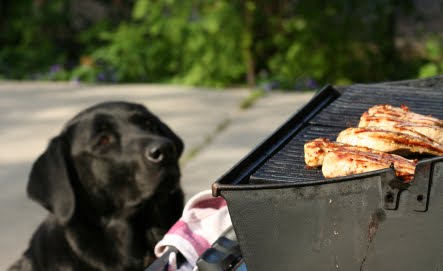 Besides an upset tummy, potential exposure to toxic foods such as chocolate or grapes, or ingestion of dangerous items such as bones, there is another danger when your pet overeats: pancreatitis.
Besides an upset tummy, potential exposure to toxic foods such as chocolate or grapes, or ingestion of dangerous items such as bones, there is another danger when your pet overeats: pancreatitis.
Pancreatitis is inflammation of the pancreas, the organ that is responsible for releasing enzymes that aid in the digestion of food. Pancreatitis can be brought on by many causes, sometimes unknown, however overindulgence does seem to trigger it in some dogs. Signs of pancreatitis can include vomiting, diarrhea, abdominal pain, loss of appetite, and/or fever. Flares can range from mild and self-limiting to severe and requiring hospitalization and intensive care. Very bad cases can cause scarring of the pancreas, resulting in diabetes mellitus.
The safest bet is to limit the amount of “people food” you pet is allowed. Find other ways to include your four-legged friend this summer!
If you think your dog may have eaten something he shouldn’t have be sure to let your veterinarian know, or give us a call.
Kennel Cough – What you need to know before boarding your dog
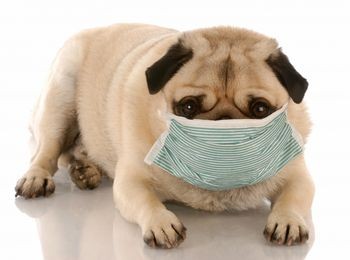 Most people have heard of kennel cough and are aware that it is a contagious upper respiratory disease that can be passed from animal to animal in close contact situations such as a boarding facility. Here are some things you might not realize, however:
Most people have heard of kennel cough and are aware that it is a contagious upper respiratory disease that can be passed from animal to animal in close contact situations such as a boarding facility. Here are some things you might not realize, however:
- Kennel cough is often caused by a complex of infectious viruses, often in combination with the bacteria Bordetella.
- While the kennel cough vaccine protects against Bordetella (and sometimes Parainfluenza virus), there are several other culprits that can be involved. This means that just because your dog is vaccinated does not mean that it cannot develop kennel cough (Although vaccinated dogs often develop a much less serious illness).
- Dogs kept in crowded conditions with poor air circulation are more likely to contract the disease.
- There are two types of kennel cough vaccines- injectable and intranasal.
- The injectable vaccine needs to be boostered 3-4 weeks after the initial dose to be effective. The intranasal vaccine requires at least 4 days in order to provide protection to your pet. This means you should not wait until the last minute to vaccinate your pet.
- Intranasal vaccination can produce a very mild, self-limiting case of kennel cough.
- Kennel cough takes 2-14 days from the time of exposure to the development of clinical signs.
- If your dog is already incubating kennel cough, vaccination will not stop the disease.
- Most cases of kennel cough are not serious and resolve quickly with treatment. Occasionally, though, serious complications can develop. If your pet is not doing better soon after starting treatment, let your veterinarian know immediately.
If you have any questions contact us or reach out to your primary veterinarian.
The Dog Days of Summer
If you haven’t noticed yet, it is a little warm outside lately. Did you know that pets can very easily become overheated? And that heat stroke is a major cause for an emergency veterinary visit in the summer? 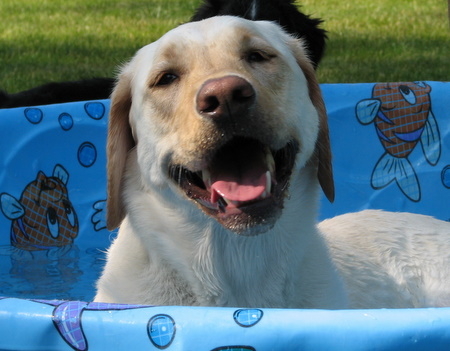 That doesn’t mean you and your pet can’t enjoy the outdoors, though. Do the following to ensure that your pet stays out of the hospital this summer:
That doesn’t mean you and your pet can’t enjoy the outdoors, though. Do the following to ensure that your pet stays out of the hospital this summer:
- Never leave your pet in an enclosed area such as a car for any length of time, even just a few minutes. Temperatures can rise quickly, resulting in severe heat exhaustion.
- Always be sure your pet has access to fresh, cool water. This may mean planning ahead and bringing a portable dish and water bottle dedicated to Fido.
- Make sure your pet can get out of the heat if s/he wants to do so. This may mean a shady spot in the yard or the ability to retreat indoors if the sun becomes too intense.
- Try to do outdoor activities early in the morning or in the evening when temperatures tend to be lowest.
- Be on the lookout for signs of overheating. These may include heavy panting or difficulty breathing, drooling, and weakness. Unchecked these can progress to diarrhea, vomiting, lack of responsiveness, and seizures. If you think your pet is suffering from heat stroke, contact your veterinarian right away.
If you have any questions contact us or reach out to your primary veterinarian.
Top Ten Pet Dangers on the 4th of July
Happy birthday America! The 4th of July is an exciting holiday, but it can be riddled with dangers for our furry friends. 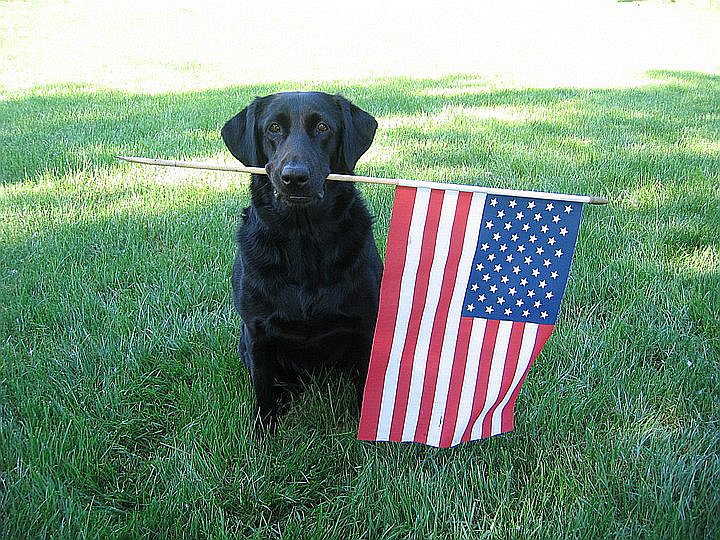 Some of them are more obvious than others. Make sure that you know the big ones to help your pets steer clear of any holiday mishaps.
Some of them are more obvious than others. Make sure that you know the big ones to help your pets steer clear of any holiday mishaps.
- Fireworks – This one is kind of a no-brainer. After all, lighting fireworks can be dangerous for people, too. Did you realize that even unlit fireworks pose a danger to your pet? Ingestion can be toxic. Help you pet avoid burns, trauma, and even death by just keeping them indoors.
- People food – Many favorite picnic and party foods contain ingredients such as chocolate or grapes that can be deadly. Even overdoing it with treats or fatty foods can lead to vomiting, diarrhea, or more serious conditions such as pancreatitis.
- The heat – Pets should stay indoors when possible and always have access to fresh water and shade. Never leave your pet unattended in a car.
- Themselves! – The loud noises and chaos of the holiday can lead to even the most docile pet becoming frantic. Make sure your pet has a safe haven within your home and keep anything dangerous out of reach. Some pets may even require a sedative to get them through the holiday.
- Alcohol – Be sure that any alcohol around during the holiday festivities is kept out of reach.
- Lighter fluid and matches – Lighter fluid can be irritating to the skin and ingestion of either matches or fluid can lead to serious problems in pets.
- Bug sprays and insect repellants – Many human-use bug sprays can cause problems for pets such as digestive upset or even neurological problems. Citronella products and lead to problems if ingested or inhaled.
- Glow sticks – These fun holiday toys can be harmful if swallowed due to the risk of gastrointestinal obstruction or irritation.
- Decorations – Red, white, and blue décor can look like a fun chew toy! Keep decorations out of paws reach.
- No ID – Pets that run when scared are more likely to become separated from their owners. Be sure your pet is wearing current identification at all times. If your pet isn’t microchipped you should consider it, and if he is you should be sure that your contact information is up-to-date.
If you have any questions contact us or reach out to your primary veterinarian.
The “C” Word
It’s the one word pet owners dread hearing- cancer. Sadly, various types of cancer are very common in pets and accounts for nearly 50% of all disease-related deaths each year. 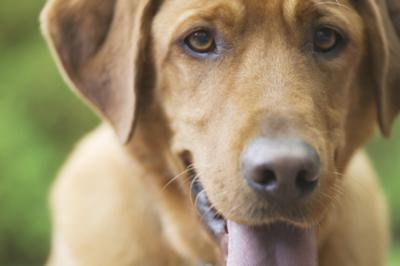 At this point in time, cancer is not really preventable, but early detection is key to treatment success. By paying attention to the following signs, you may help bring an issue to your veterinarian’s attention that could save your dog or cat’s life.
At this point in time, cancer is not really preventable, but early detection is key to treatment success. By paying attention to the following signs, you may help bring an issue to your veterinarian’s attention that could save your dog or cat’s life.
- Swellings – Lumps and bumps are not an uncommon finding, and many are harmless. Be sure to point them out to your veterinarian though, especially if they are not going away or are growing.
- Odors – More than just a stinky dog? Truly offensive odors need to be checked.
- Abnormal discharges – Diarrhea, vomiting, blood, and pus are never normal. Similarly, sudden bloating of the belly can be a sign of a problem.
- Non-healing wounds – Infection, skin disease, or certain types of cancer can all present similiarly.
- Weight loss – Unless your pet is on a diet, sudden weight loss should always raise a red flag.
- Appetite changes – Decrease or increase in appetite can be a clue that something is not right and needs to be investigated.
- Coughing or breathing difficulty – The heart and lungs can be the culprits here, however many types of cancer can spread to the lungs, causing these symptoms.
- Change in behavior – If your pet is acting lethargic, depressed, or distraught, it may be a symptom of a health issue.
- Change in bathroom habits – Difficulty using the bathroom, increased potty breaks, and bloody urine or stool may not always signify cancer, but they are never normal.
- Pain – Limping or tenderness can be caused by a variety of things, but some types of cancer (such as bone cancer) may show up similarly.
Does Your Cat Have a Green Thumb?
Many plants can cause serious harm or even death to a curious kitty that may nibble on them. Does that mean you have to banish all greenery from your house? Of course not!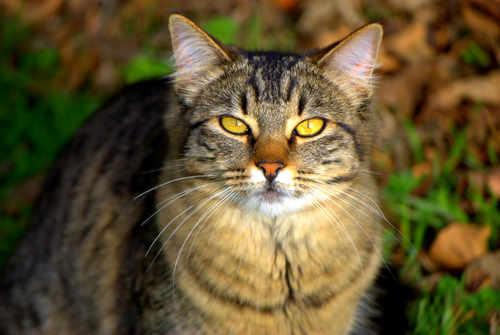 Here are some feline-friendly plants you can use to make your living space a little greener:
Here are some feline-friendly plants you can use to make your living space a little greener:
- Herbs: Basil, German chamomile (NOT English), coriander, dill, and parsley are all kitty approved!
- Flowers: Cornflowers, impatiens, moon orchids, petunias, and zinnias all get two paws up.
- Greenery: Bamboo, dwarf palms, and sword ferns are feline-friendly, too.
Before bringing any new plants into your home or outdoor areas where your cat may frequent, you can double check if they are safe by consulting the ASPCA’s list of toxic and non-toxic plants. This website features links to pictures and information about each plant, including a description of any dangers to your cat.
If you have any questions contact us or reach out to your primary veterinarian.
It’s Getting Hot, Hot, Hot!
 For many of us, the heat of the summer means pool parties, barbeques, and sun tans. For many pets, though, the heat can quickly lead to heat exhaustion. Dogs and cats have an extra layer of insulation cannot always exchange heat as efficiently as we do. In particular, “smush-face” breeds such as Pugs, Bulldogs, and Persians have a very difficult time. This doesn’t mean that your pet can’t enjoy the sunshine, it just means that you need to take some extra precautions when the mercury rises.
For many of us, the heat of the summer means pool parties, barbeques, and sun tans. For many pets, though, the heat can quickly lead to heat exhaustion. Dogs and cats have an extra layer of insulation cannot always exchange heat as efficiently as we do. In particular, “smush-face” breeds such as Pugs, Bulldogs, and Persians have a very difficult time. This doesn’t mean that your pet can’t enjoy the sunshine, it just means that you need to take some extra precautions when the mercury rises.
Keep a close eye on your pet. If you begin to notice very heavy panting or deep, fast breathing (hyperventilation), it is probably time to get into the air-conditioning. Other warning signs can include increased salivation, lethargy or disorientation, and vomiting or diarrhea. Unchecked these signs can quickly develop into seizures or coma. Pets should be observed regularly if left outside unattended. Never leave them in a car unattended.
Make sure your pet has what it needs. Fresh, cool water should be available at all times. If you are hiking or walking be sure to bring an extra bottle for Fido. Your pet should have access to shade and the ability to get out of the heat if desired. Consider getting a small wading pool for your pet to lounge in.
Don’t chance it. If your pet is exhibiting signs of heat exhaustion, seek veterinary care immediately.
If you have any questions contact us or reach out to your primary veterinarian.
Keeping a Pet-Safe Garden
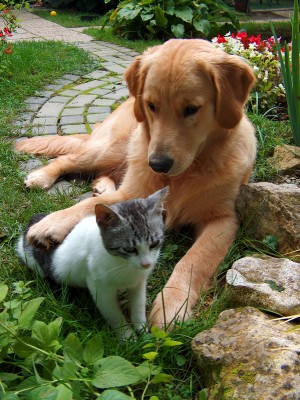 It’s that time of year again, when warmer temperatures and longer days make us head outdoors to spend more time in the fresh air and sunlight. If you happen to be a gardener, it’s probably also the time that you’re just itching to start digging in the dirt, and you may be deciding what flowers and veggies you may want to plant. It’s important to keep in mind that although gardening can be a very rewarding hobby, it can also be dangerous for our furry friends. Luckily, creating a pet-safe garden is not very difficult. We just need to take a few extra precautions to ensure that our yards and gardens are as safe as they are beautiful.
It’s that time of year again, when warmer temperatures and longer days make us head outdoors to spend more time in the fresh air and sunlight. If you happen to be a gardener, it’s probably also the time that you’re just itching to start digging in the dirt, and you may be deciding what flowers and veggies you may want to plant. It’s important to keep in mind that although gardening can be a very rewarding hobby, it can also be dangerous for our furry friends. Luckily, creating a pet-safe garden is not very difficult. We just need to take a few extra precautions to ensure that our yards and gardens are as safe as they are beautiful.
Avoid Poisonous Plants
The most obvious way to create a pet-safe garden is to choose the right plants. Not all pet owners realize that a great many garden plants are toxic to dogs and cats. Popular varieties such as azalea, rhododendron, oleander, foxglove, lily of the valley, sago palm, tulip and daffodil all fall into this category. Pets that eat these poisonous plants can experience everything from an upset stomach and diarrhea, to seizures and liver failure. Be sure to check the ASPCA’s comprehensive list of toxic plants before deciding which plants will make it into your garden.
While not toxic, it’s also a good idea to avoid trees, shrubs and plants that are likely to cause allergies. Many of the same plants that cause allergies in humans will affect your pet as well. Look for pollen-free plant species whenever possible. If you do select a plant with a high allergy potential, avoid planting it under windows that you’ll have open during the summer. If you already have one of these trees or hedges in your yard, keep it heavily sheared so it will flower less.
Choose Your Mulch Carefully
Many gardeners use cocoa bean mulch—a by-product of chocolate production—in landscaping. It has an attractive odor and color that make it a popular choice, but cocoa mulch can pose serious problems for your dog. To be safe, opt for shredded pine, cedar, or hemlock bark instead. Also try to avoid mulch that has been treated with weed inhibitor or insect repellent.
Rethink Toxic Chemicals
Try to avoid the use of chemical fertilizers, pesticides or weed killers in your yard and garden. These pose a danger to dogs and cats because anything picked up on their paws could be licked off later. There are plenty of organic, earth-friendly products available as an alternative that are safe for both pets and humans. Ask your local gardening center for recommendations and they should be able to point you in the right direction.
Insecticides are often necessary to keep our gardens healthy, but their ingredients aren’t safe for our furry friends. The most dangerous forms of pesticides include snail bait with metaldehyde, fly bait with methomyl, systemic insecticides with the ingredients disyston or disulfoton and most forms of rat poisons. Again, a conversation at your gardening center may be able to provide you with some effective but natural alternatives.
Compost Piles and Worm Bins
These eco-friendly practices can be great for your garden, but be sure they’re not accessible to your pets. Dogs that view garbage and rotting food as a special treat may consider this a buffet, but it’s one that could make them sick.
Garden Tools
Just like toddler-proofing, be sure to keep all pruning shears, trimmers, tillers, rakes and other gardening tools picked up and stored safely out of reach of your pets.
Gardening is a great hobby, and with a little extra planning and effort, it’s not difficult to ensure that your hobby will be safe for your pet.


